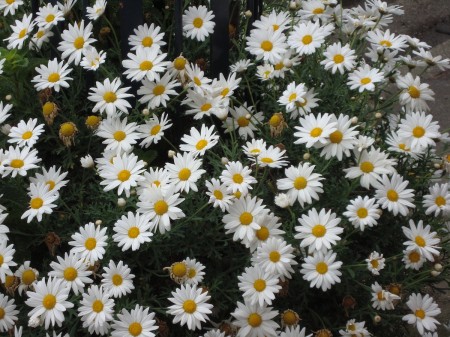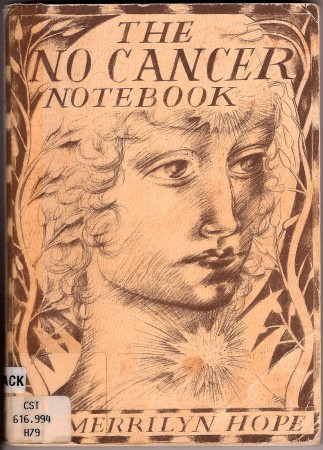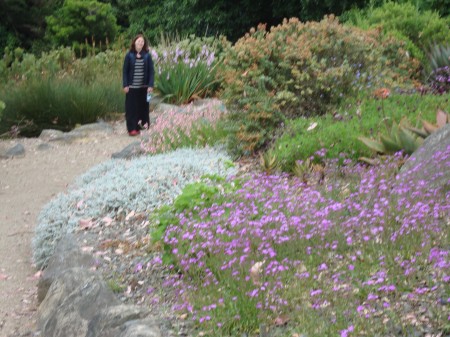Natural Remedies
There are many wonderful healing herbs or weeds which you can grow in your garden for the purpose of helping cure many of the common ailments which allay us. They will also help the bees to make good honey and stay healthy.
note – this article was originally posted up around 2010 – mistakenly, it was moved onto another site – now restored to this one
Below I list some of the easiest ones to grow, and some of the most useful, which you can add to your garden, whether it is large or small.
Caution: I do not recommend that people try these remedies without consulting a herbalist. They are recorded here below for interest, and as a resource in the case of circumstances of emergency which might make doctors and conventional medicines unavailable. See your doctor if you are ill.
Medicinal Uses of Aquilega vulgaris, also known as Granny’s Bonnets, or Columbine.
Aquilegia is a Ranunculaceae , commonly known as ‘Granny’s Bonnets’, or ‘Columbine’. These plants have lovely bell-shaped flowers which come in various shades of purple, pink, maroon, white, or yellow.
They look very pretty, rising up a couple of feet or so from the ground, with their delicate flowers hanging most voluptuously from their spindly, slender-stalks. Once you have them in the garden, they will self-seed and give you more of the same the following year. As it is a perennial, the old plant will surprise you. After it has died down, it will come up again in the spring to flower again.
Aquilegia, or Columbine, is an astringent,diuretic, and diaphoretic.
One teaspoon of plant root can be steeped for several hours in cold water: of this, you can take one tablespoon at a time, from three to six times a day for diarrhea, according to John Lust. Personally, I would lower the dose to only a teaspoonful, to be on the safe side.
Dr Lust recommends the flowers be used in wine to promote perspiration. He does not state the recipe for using the flowers, but I would use one teaspoon only, soaked in a glass of wine for three hours, taken a teaspoonful at a time. The dose could be repeated from three to six times a day. Build up the dose to one tablespoonful if need be.
I would not continue this remedy for more than a day or two.
Aquilegia Lotion For Arthritic Pains:
A lotion to help the aches and pains of rheumatism and arthritis can be made from the root of aquilegia. This is a safe remedy to try, as it is only applied externally. Chop or grate a quantity of root and soak for two days in just
enough vodka to cover. Strain and bottle. Rub onto sore joints as needed.
Culpepper says that the Columbine is ‘an herb of Venus’; that Tragus recommended a drachm of the seed to be taken with saffron in wine, for treating conditions of the liver such as yellow jaundice. Culpepper recommends the seed in wine for ‘a speedy delivery of women in childbirth’. You would use even less of the seed: only 5 seeds to a wineglassful of wine,infused for a few hours; the dose – one teaspoon every three hours for up to five doses, in my estimation.
I must say that I did not get around to trying this remedy for an easy childbirth when I had my children. But there you have it.
Golden Rod, Solidago virgaurea:
Otherwise known as European Goldenrod, this is another beautiful, now quite rare, perennial to grow inyour cottage garden. It reaches about three feet tall when it is ready for flowering, taking up about as much room as a maize, or corn plant. Its flowers are golden yellow, as its name implies, and these are formed amidst a furry down, a little like thistle down: this acts as its parachute to carry it off on the breeze.
Medicinal Uses of Golden Rod:
Golden Rod is well known for its therapeutic properties. It is astringent and diuretic. It has been used for the treatment of kidney stones and other kidney ailments; nephritis and arthritis; menorrhagia; whooping cough; and
eczema and psoriasis. It can be used both internally and externally.
Culpeper holds it in high esteem: apart from ridding the body of kidney stones, he recommends it for internal bruising and calls it’a sovereign wound herb, whereby green wounds and old ulcers are speedily cured’. He also
recommends it as a rinse for ulcers in the mouth or throat or ‘privities’, and for firming up loose teeth.
Venus rules this herb, according to Culpeper.
The leaves can be crushed and used as a poultice for insect bites and other skin abrasions.
Dose: Make a tea by simmering one tablespoon of flowers in a cup of water for three minutes. Strain, and drink when cooled. Take one cup a day as needed, for up to three days at a time, and then a break.
Use the same tea for external use.
Ladies’ Mantle, Alchemilia vulgaris.
This is an herb which has a place in every cottage garden because of its attractive foliage, as well as its medicinal qualities. It loves to grow in shady spots, beneath, say, the cover of a linden tree, or a mulberry.
It is ruled by Venus, so Culpeper tells us.
In Sweden, it is a folk-remedy for aiding sleep in restless children, a sprig being put under the pillow. It is a great wound herb, as it helps to coagulate the blood. It is useful for all inflammations and ruptures, and can be taken internally and used externally.
Culpeper says that ‘the Germans, who, in all wounds, inward and outward, drink the decoction thereof, and wash the wounds therewith…’, and that it quickly heals ‘green’ wounds and old sores.
It is a great ladies’ herb, of course. Culpeper claims it aids conception and helps mastitis conditions in breast-feeding mothers. A poultice of the infused leaves can be laid over the breasts, and a tea taken to help painful lumps of mastitis. It can be used in a bath to help prevent miscarriages. It is a traditional remedy for treating infertility.
It can be used both internally and externally for thrush.
Dose: Make a tea using one or two teaspoons of chopped fresh Ladies’ Mantle leaves.
A tea made with one teaspoon each of marigold flowers and Ladies’ Mantle is reputed to be good for period pain.
John Lust uses four teaspoons of dried herb, soaked in a cup of water for ten minutes. A cup a day can be taken for up to one week at a time.
I would prefer to use the milder option of one teaspoon of fresh herb with marigold petals in a tea.
Lemon Balm, Melissa officinalis
A small area in the garden should be given to this very useful and sweet smelling herb. Bees just LOVE it, which alone is a very good reason to grow it.
Medicinal Uses of Lemon Balm:
It may be taken freely as a refreshing and soothing tea. It aids sleep, and helps reduce anxiety.
Dose: Just add a few leaves to your pot of tea, or infuse on its own. Three or four cups a day of tea can be taken.
Take a cup before bed, sweetened with honey to help with attaining a good night’s sleep.
Feverfew, Chrysanthemum parthenium
This is also known as featherfew, or febrifuge plant.
This is a great little cottage garden plant: It is an attractive, small chrysanthemum which, when allowed to, will pop up along the sides of paths and between pavement cracks. It is not a menace by any means, as they pull up easily if you wish to remove some of them.
Medicinal Uses: Feverfew is carminative, an emmenagogue, purgative, stimulant and tonic. It could be of use to the recovering alcoholic, or for people who have drunk to excess.
It is useful to cure migraines,fevers, help colds and flu, and indigestion.
John Lust, in ‘The Herb Book’, suggests it can be used for fixing the alchololic d.t.’s.
Dosage: Make a cupful of tea with one teaspoon of flowers or leaves. Take only one tablespoonful of this
mixture through the day, until the tea is finished.
Two cups per day is the maximum dose per day, taken always just a tablespoonful at a time.
Note: Do not use this tea every day, but only as is necessary, as a medecine.
Hollyhock, Althaea rosea:
Also known as Althea rose, malva flowers, and rose mallow. It is related to the common Marshmallow, which is also a medicinal herb.
This is a lovely tall flowering plant which will add grace and charm to your garden. It comes in colours similar to the Hibiscus: peach, pink, crimson, white, cream, purple, and yellow.
Plant it alongside a wall, or in some sheltered, sunny spot where it will be protected from the wind. ‘The tall hollyhock has the most beautiful flowers which grow all along its upper length, giving the plant a spine of vivid colour’, to quote the eloquence of one herbal. As it is economical on space, even if you have only a small patch of ground, there should be room in your garden for a hollyhock or two, perhaps outside a window.
It is very easy to grow from seed. One plant will last for several years, coming up again from the ground after it has died down.
Medicinal Uses of Hollyhock:
Hollyhock is a demulcent, diuretic and emollient. It is a safe herb to use for helping bronchial complaints and chest infections, as it soothes the mucous membranes. I have used the flowers on many occasions to treat
chest problems in my children, and for myself, in combination with halibut liver oil.
Make a tea of one tablespoonful of flowers and covering with boiling water. Leave to infuse for several minutes. Drink the tea in sips over an hour. Make some more tea if needed. An adult could take 2 or 3 cups per day if necessary, whilst a child would take half this amount or less.
Note- see your doctor if your child is sick. You can safely use hollyhock in combination with any medication you might be given for a chest ailment.
Lavender, Lavandula augustifolia.
Lavender attracts bees into your garden almost all the year round, which makes it a ‘must’ to plant. Every good garden deserves at least one lavender bush.
It can be planted as a small hedge, or as border around areas of the cottage garden. There are many varieties to choose from.
Uses:
Lavender is an antispasmodic, carminative, cholagogue, diuretic, sedative, stimulant, and tonic. But be cautious with using lavender. It is a strong herb, and only a small amount is needed.
It is a calmative which can be helpful for reducing high blood pressure, anxiety and heart palpitations. It can help regulate menstruation.
The vapours of lavender can help to calm a woman during childbirth, and it can aid in expelling the placenta after childbirth if a compress containing lavender oil is laid over the abdomen.
A tea made of equal parts of lavender, chamomile and calendula is said to help restore a new mother to health and aid in the production of milk, so says John Lust.
Lavender oil is a natural insect repellant and a disinfectant. The oil kills head lice, and will deter fleas.
Lavender oil is known as the ‘mother of all essential oils’, as it is so verstile.
Lavender oil can be applied directly to burns, bites and stings, and used as an embrocation for sore joints.
The oil can be burnt in an oil burner, or a few dried lavender heads burnt in an oven-proof dish along with dried rosemary stalks. Just a little of the ensuing smoke will deter mosquitoes and other insects.
It combines well with most other oils, such as bergamot,eucalyptus, rosemary and pine.
The flowers can be dried to use in pot-pouri, and put in lavender bags to deter moths from eating your clothes.
Dose: Use the leaves for an infusion. Steep one teaspoon of chopped leaves in half a cup of water for two hours.
This dose can be safely taken twice a day for several days to help anxiety, sleeplessness, nausea and vomiting, migraines, clogged intestines, and lack of appetite.
Cease taking the decoction once improvement has been noted.
Valerian, Valeriana officinalis
Culpeper gives Mercury as the ruler of Valerian. Merciry rules the intellect and communication.
This herb has attractive red, pink, white, or yellow flowers. It is great to grow on clay banks where little else
will grow. It will spread over time, so the root needs to be divided once in a while.
The white flowered valerian is the one with the highest medicinal value. The root is the part used.
Medicinal Use Of Valerian:
It is used as a mild tranquillizer, and to bring on sleep.
It has also been used as a counter-poison. According to Culpeper, boiled in wine, it can be taken for venomous bites
and stings.It was used, in Culpeper’s time, as a remedy against the plague.
For improving the sight, it was used externally by first boiling a little root in white wine for several minutes.
One drop only of the cooled mixture was used for each eye.
For Wounds and Bruises: It is another great wound herb, both internally and externally. The leaves and root can be crushed and applied to help draw out splinters.
Note: Ask your naturopath or doctor about using Valerian. It can become addictive, so beware. Hitler was said to be a Valerian addict.
More to follow…..
Bibliography
Culpeper, Nicholas. Culpeper’s Complete Herbal. Arcturus Publishing Limited, London, 2009
Lust, John. The Herb Book. Bantam Books, New York, 1974
My new book is available on Amazon:http://www.amazon.com/Cancer-And-Good-Health-Notebook-ebook/dp/B01DHMH6DG/ref=zg_bsnr_157202011_15








